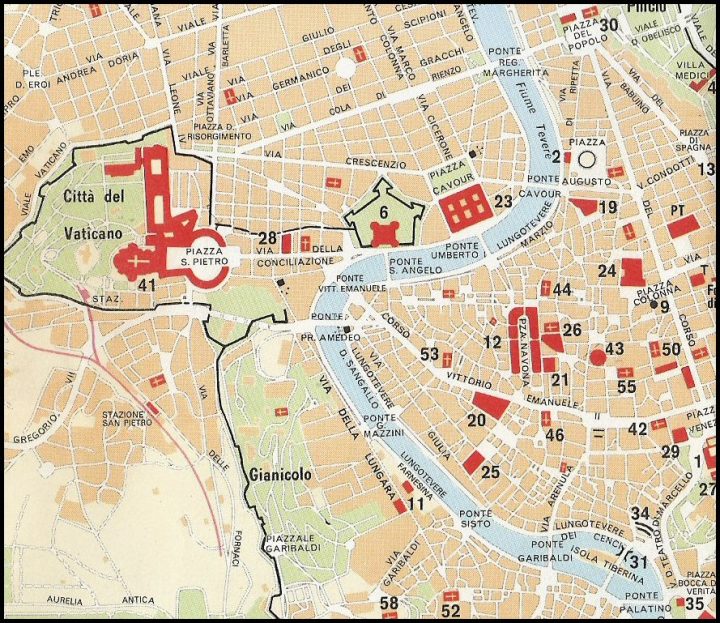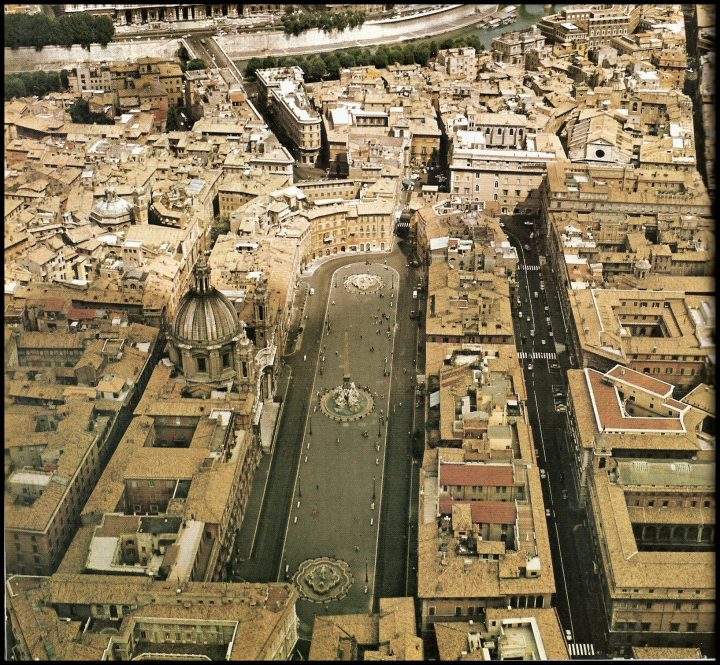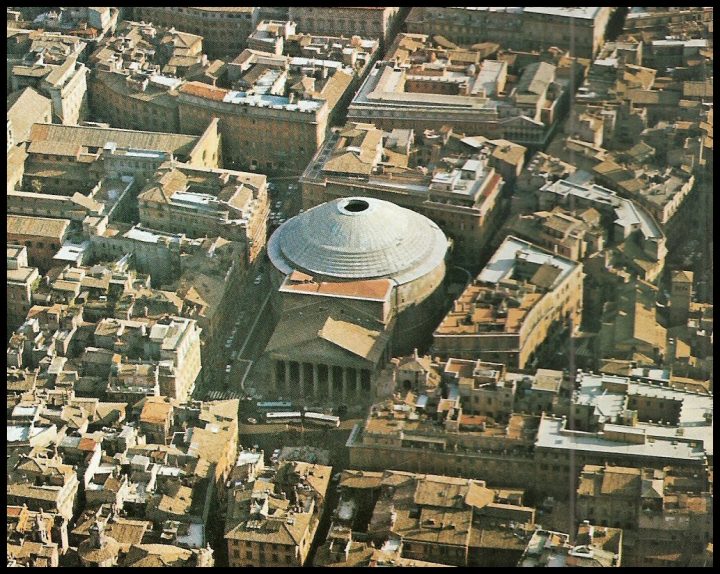In the previous page of “Visiting Rome” we visited the Vatican City State, the abode of the Pope, and stopped our tour at the Justice Tribunal, located near Castel Sant’Angelo, along the river Tiber.
Now from the Justice Tribunal we cross the river through Ponte Umberto I, named after the king of Italy. It is the bridge that leads us to Via Zanardelli. We follow this street and turn right, until we find ourselves in one of the most famous squares in Rome: Piazza Navona.

PIAZZA NAVONA IN ROME
Piazza Navona is a very characteristic square, not only for its particular elliptical shape, but most of all for the presence of three fountains. The most famous of them is called “Fountain of the four rivers”, designed in 1651 by Gian Lorenzo Bernini for Pope Innocent X of the Pamphili family.

The fountain is formed by a high Egyptian obelisk with the symbol of Pamphili family on its top: a dove holding an olive twig in its beak. Beneath the obelisk, there are four marble statues representing the gods of the four rivers, emblem of the four main continents known at the time: the Danube representing Europe, the Nile representing Africa, the Ganges representing Asia and the Rio De la Plata representing America.
The square is always crowded, and full of people, and around it there are numerous characteristic little restaurants that every day host many tourists come for lunch or dinner to taste the delicious Italian kitchen. You can also find many artists and painters and ask them to take your portrait or caricature.
PALAZZO MADAMA
From Piazza Navona we easily and quickly reach Palazzo Madama, a famous building that is the abode of the Italian Senate. The Italian Senate was once located in Turin, but then moved to Rome in 1864, after the unification and proclamation of the Kingdom of Italy. Nowadays Italy is a parliamentary republic founded in 1946.
Near Palazzo Madama, there is another important building: the church called Saint Louis of the French, built in memory of Louis IX of France who was king, saint and crusader in the XIII century. The church is also dedicated to Saint Mary and Saint Denis the Areopagite.
It was built in the XVI century and it’s renowned also because it contains three important paintings by the Italian artist Caravaggio, inspired to the life of the apostle Saint Matthew:
- Calling of Saint Matthew
- Inspiration of Saint Matthew
- Martyrdom of Saint Matthew
THE PANTHEON OF ROME
After Saint Louis of the French’s church, we go on with our trip and move towards the Pantheon.

The building, whose name has obviously classical origins and means “Temple of all the gods” in ancient Greek, was built during the Roman Age in 27 b.C. by Emperor Augustus’s father-in-law.
It was meant to be a shrine to celebrate all the heathen divinities worshiped at the time.
Nowadays it is a Roman Catholic Church dedicated to “Saint Mary and the Martyrs” and it is famous both artistically and historically. Artistically because of its round shape and its characteristic roof with the oculus on its top lighting up all the area; historically because it is the tomb of all the kings of Italy belonging to the House of Savoy from 1878. It is also where the last king of Italy, Victor Emmanuel III, was buried.
WATCH THE VIDEOS OF “VISITING ROME” ON YOUTUBE AND SUBSCRIBE TO THE CHANNEL!
